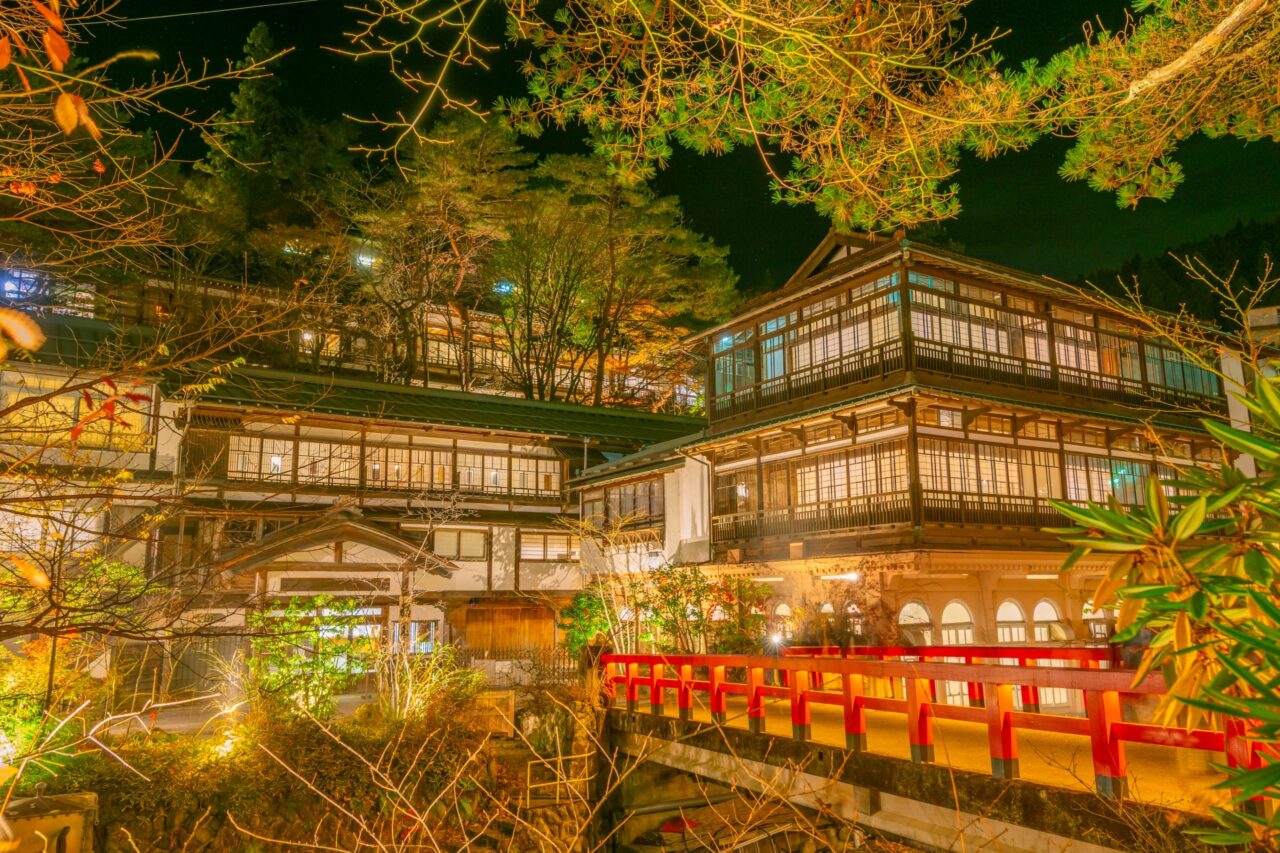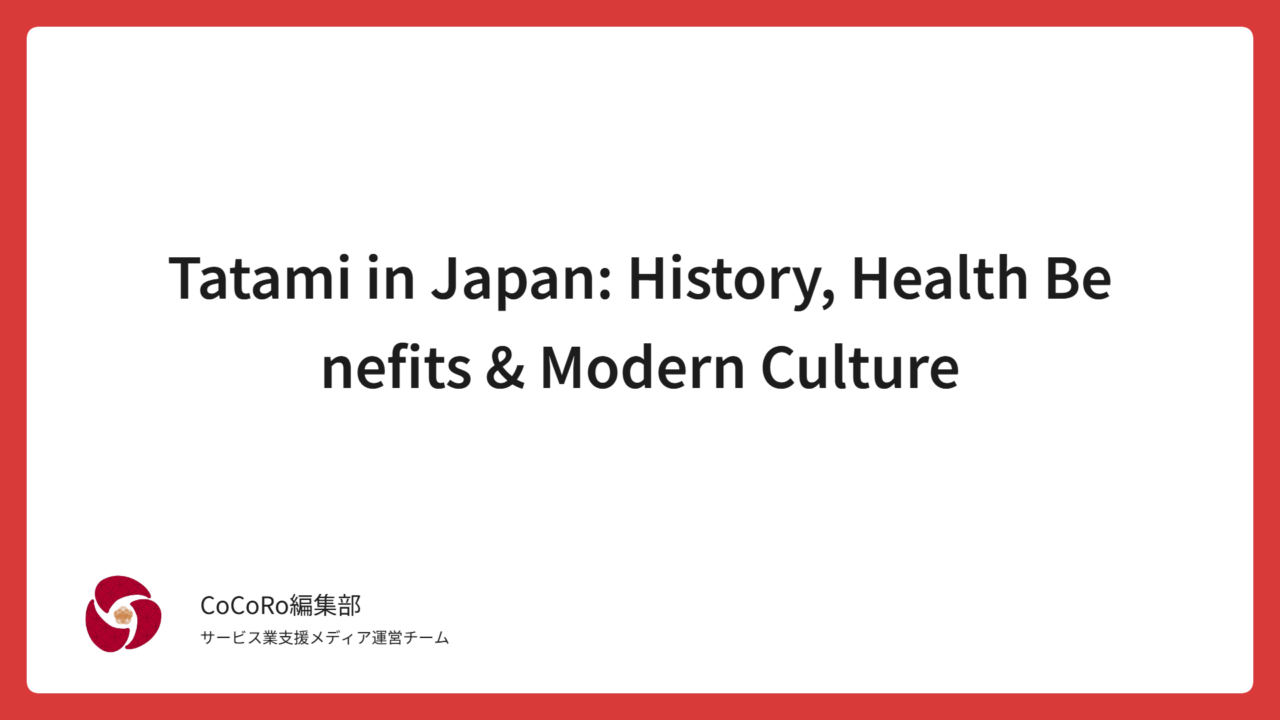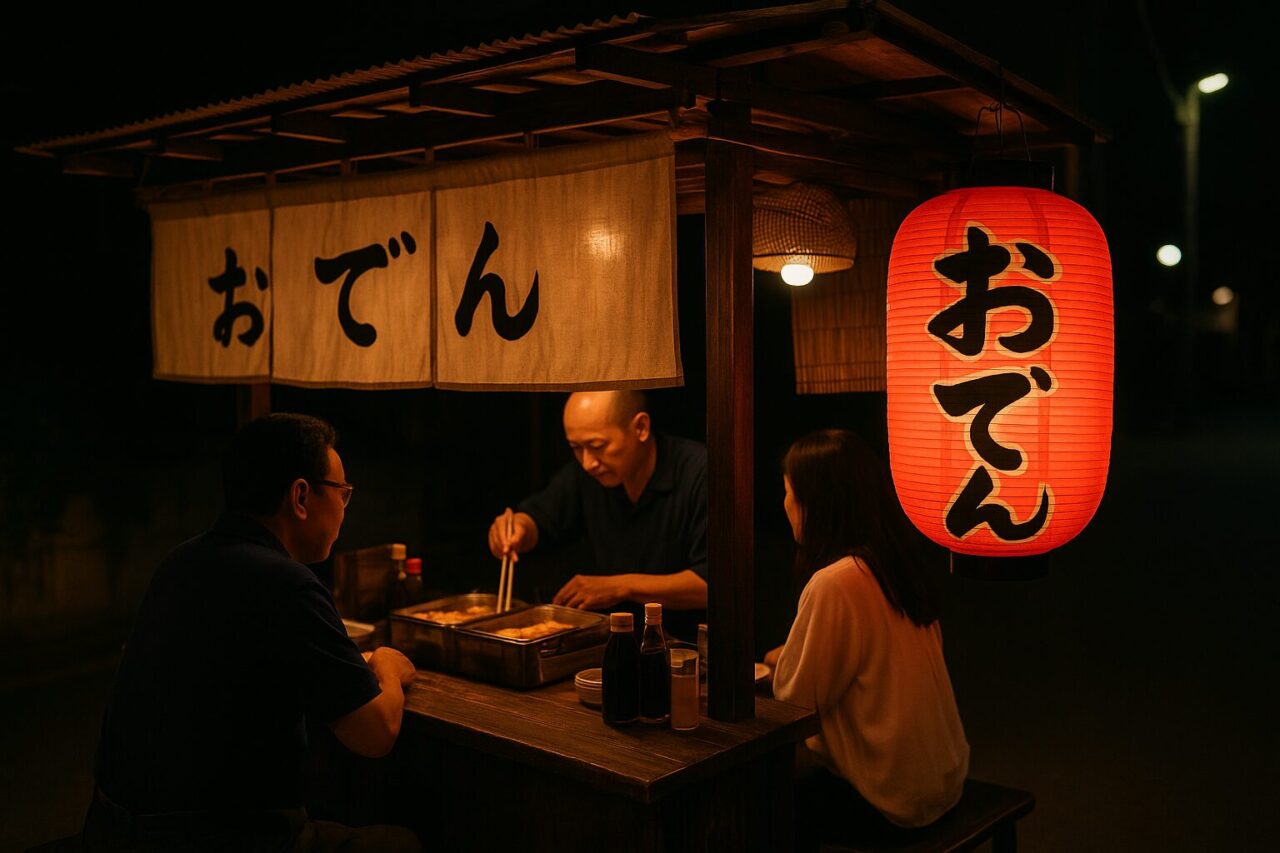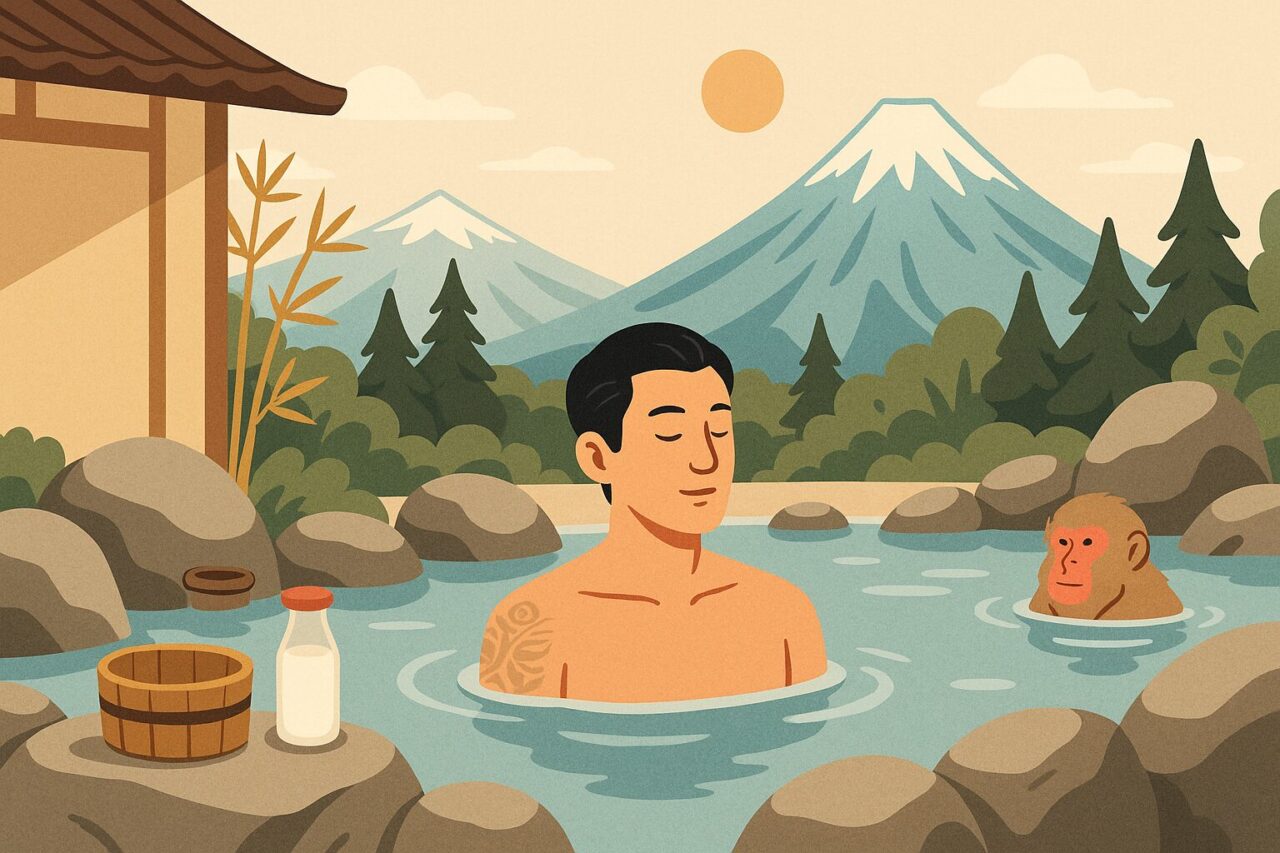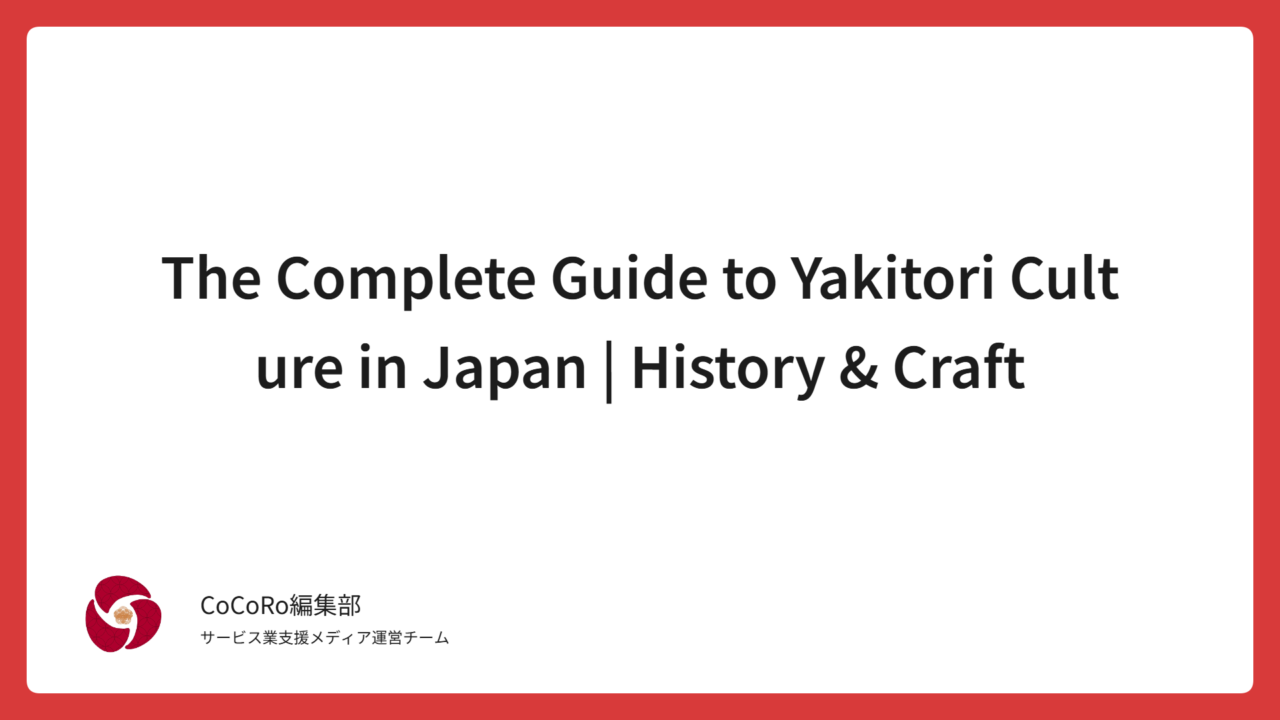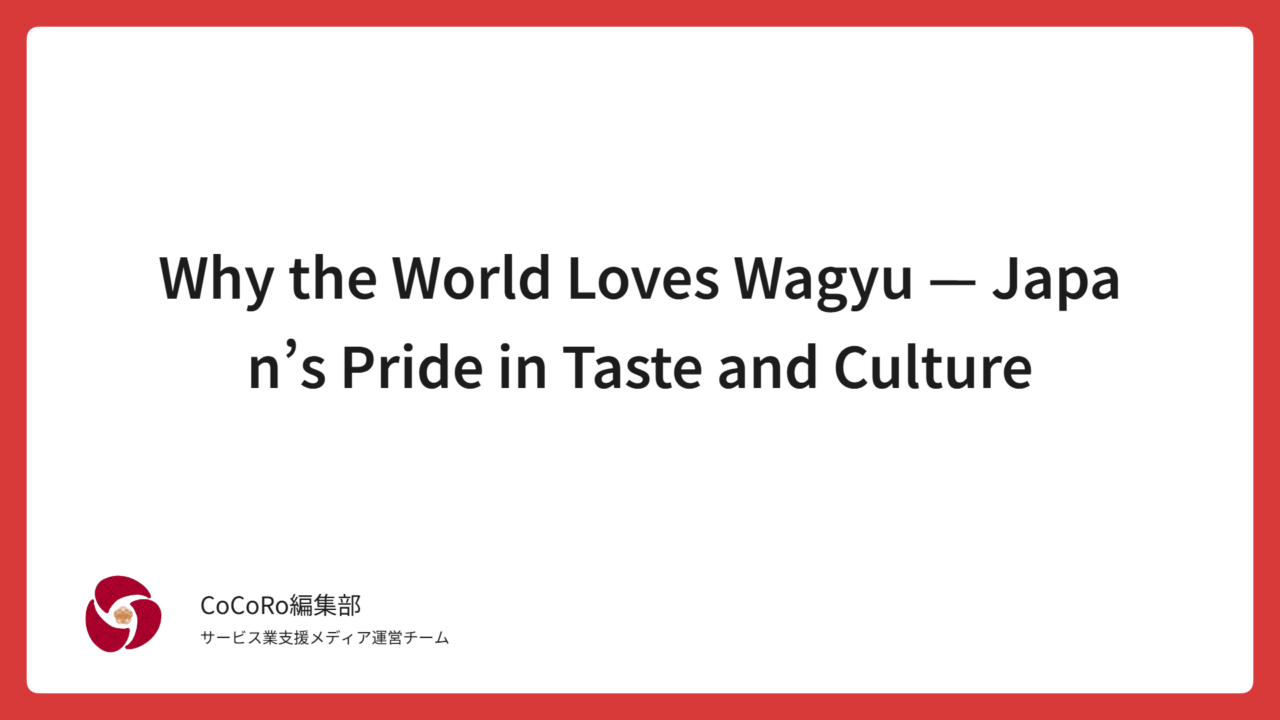
- Introduction: The World’s Love Affair with Wagyu
- Chapter 1: What Is Wagyu — More Than Just Beef, It’s a Culture
- Chapter 2: The Secret of Flavor (1) — Marbling as an Art Form
- Chapter 3: The Secret of Flavor (2) — A Stress-Free Philosophy of Raising Cattle
- Chapter 4: The Secret of Flavor (3) — Craftsmanship and the Grading System
- Chapter 5: The Global Reach of the Wagyu Brand
- Chapter 6: Why It’s So Expensive — The Philosophy Behind the Price
- Chapter 7: How to Enjoy Wagyu — A Luxury to Be Experienced
- Chapter 8: Wagyu and the Japanese Sense of Aesthetics
- Conclusion: Wagyu — A Cultural Heritage Born from Skill and Spirit
Introduction: The World’s Love Affair with Wagyu
“It melts like butter.”
That’s how many first-time visitors describe Wagyu in viral clips across social media and food channels.
Today, Wagyu stands alongside sushi and tempura as one of Japan’s most iconic culinary traditions — a symbol of refinement and craftsmanship admired around the world.
From the United States and France to Hong Kong and Dubai, the word “Wagyu” is instantly recognized and celebrated.
However, many visitors from abroad have the same question:
“Why is Wagyu so completely different from any other beef?”
The answer lies far deeper than simply having more fat or being tender.
Within Wagyu lives something profoundly Japanese —
a spirit of craftsmanship, an aesthetic sensitivity,
and a philosophy that treats food as a form of art.
Chapter 1: What Is Wagyu — More Than Just Beef, It’s a Culture
What you should first understand is that “Wagyu” does not simply mean beef from Japan.
The term Wagyu refers to four native breeds that have been refined over many decades:
Kuroge Washu (Japanese Black), Akage Washu (Japanese Brown), Nihon Tankaku Washu (Japanese Shorthorn), and Mukaku Washu (Japanese Polled).
Among them, the Japanese Black is the most highly regarded around the world, prized for its fine marbling and the sweet, buttery flavor of its melt-in-your-mouth fat.
Since the Meiji era (1868–1912), Wagyu has evolved uniquely through selective breeding and careful crossbreeding with foreign cattle.
Japan’s wide temperature variations, pure water, and a feeding environment enriched with high-quality rice straw and grains have all contributed to this evolution.
Together, these elements have shaped a flavor that can only be born — and truly experienced — in Japan.
There are beef products overseas that call themselves “Wagyu-style,”
but their bloodlines, breeding environments, and grading standards are entirely different.
Authentic Wagyu is a living work of art — created through Japan’s natural environment, its cultural values, and the meticulous craftsmanship of its producers.
Chapter 2: The Secret of Flavor (1) — Marbling as an Art Form
The most distinctive feature of Wagyu is the delicate marbling that runs through the meat.
These fine white streaks of fat resemble intricate patterns of marble — a true artwork created by nature itself.
The fat has an exceptionally low melting point, so soft that it begins to dissolve at body temperature.
That’s why, the moment it touches your tongue, the fat gently melts and spreads, blending with the lean meat to release layers of umami.
It isn’t greasy — rather, it’s an experience of liquid savoriness, where sweetness and aroma dissolve together in perfect harmony.
Moreover, this marbling is never a product of chance.
Farmers meticulously manage bloodlines and breeding conditions, fine-tuning nutrition to achieve the ideal balance of muscle and fat.
It is this harmony between visual beauty and taste that defines the true artistry of Wagyu.
Chapter 3: The Secret of Flavor (2) — A Stress-Free Philosophy of Raising Cattle
Many Wagyu farmers place the highest importance on keeping their cattle free from stress.
Each cow is given a name and raised with care—listening to soothing music, being brushed gently, and even spoken to softly.
Farmers often say, “When the cow feels calm, the meat becomes calm too.”
For these farmers, Wagyu is not a product — it is a work of art.
They strive to create an environment where each animal can grow in its best natural state, in harmony with the cycles of nature.
This embodies Japan’s unique philosophy of cattle raising — a deep sense of sincerity held by those who take responsibility for life itself.
Chapter 4: The Secret of Flavor (3) — Craftsmanship and the Grading System
In Japan, there is a detailed grading system used to evaluate the quality of Wagyu beef.
The highest grade is known as A5, where every element — meat color, fat luster, firmness, texture, and the balance of marbling — is measured and scored with precision.
However, an A5 rating doesn’t always guarantee the best flavor.
Some farmers intentionally aim for A4 instead, pursuing what they believe to be their ideal taste.
It reflects the pride of true craftsmen — those who value flavor over numerical perfection.
It takes nearly three years to raise a single Wagyu cow.
During that time, every detail — from feed composition and temperature control to water quality — is carefully monitored and recorded by hand.
Each day, farmers work at the delicate intersection of science and intuition, shaping what they believe to be the ideal meat.
Chapter 5: The Global Reach of the Wagyu Brand
Kobe Beef, Matsusaka Beef, Omi Beef, Hida Beef —
these are all regional brands within the broader category of Wagyu.
Each has its own unique “personality,” shaped by the land it comes from, the water and feed used, and the philosophy of the farmers who raise it.
While “Kobe Beef” is the most famous name overseas, only a small number of people have ever tasted the genuine article.
Authentic Kobe Beef represents just a few percent of all Wagyu that passes extremely strict certification standards, with only a few thousand heads shipped each year.
Even so, the word “Wagyu” itself has become established worldwide as a symbol of quality and trust.
Today, cattle descended from Wagyu bloodlines are raised in countries like Australia and the United States,
yet many still say that none have reached the same level of flavor perfection found only in Japan.
Chapter 6: Why It’s So Expensive — The Philosophy Behind the Price
The high price of Wagyu is not simply because it is a luxury brand.
The time, effort, and passion devoted to raising each cow are on an entirely different scale from anything seen in other countries.
Raising Wagyu cattle takes more than three years, with farmers feeding them twice a day, managing each one individually, and maintaining a completely stress-free environment.
Every step of this process is done by hand.
In addition, Japan’s traceability system—which tracks bloodlines, production history, and distribution routes—ensures that every cut of Wagyu comes with a guarantee of trustworthy quality.
Chapter 7: How to Enjoy Wagyu — A Luxury to Be Experienced
In dishes like sukiyaki or shabu-shabu, thin slices of meat are cooked for only a few seconds.
In that fleeting moment, the sweetness of the fat and the richness of the lean meat reach their absolute peak —
a true taste of the moment.
Wagyu is also highly valued as a gift, embodying the Japanese belief in giving the very best to those you care about.
This cultural idea of expressing gratitude and respect through food takes form in the finest cuts of beef.
Around the world, Wagyu is celebrated as a “luxury you can feel” — an experience that appeals to all the senses.
Chapter 8: Wagyu and the Japanese Sense of Aesthetics
An essential perspective for understanding Wagyu culture is aesthetics.
The beauty of its appearance, the aroma, the texture on the tongue, and the lingering aftertaste —
all of these elements are carefully designed to exist in perfect harmony.
The Japanese have long valued the beauty of invisible effort — the unseen work behind every creation.
The dedication behind a dish, the harmony with nature, and the respect for each ingredient —
all of these are distilled into a single plate of Wagyu.
That is why Wagyu is often called “edible art.”
Within its flavor lives the unmistakable spirit of Japanese sincerity and aesthetics.
Conclusion: Wagyu — A Cultural Heritage Born from Skill and Spirit
It is no coincidence that Wagyu is known as “expensive, yet extraordinarily delicious.”
Behind it lies generations of craftsmanship passed down through time,
a Japanese philosophy that pursues perfection in harmony with nature,
and an aesthetic that finds meaning in giving and in nurturing with care.
Wagyu is more than just a food ingredient — it is edible art that reflects the very essence of Japanese culture.
It’s no wonder that people around the world are moved by each bite, tasting not only its richness but also the dedication and sincerity infused within.

